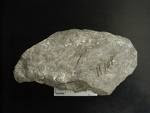MIT is chartered as a non-profit organization and is owned and governed by a privately-appointed board of trustees known as the MIT Corporation. The current board, with 74 members drawn from scientific, engineering, industry, education, and public service leaders, is chaired by Dana G. Mead. The corporation approves the budget, new programs, degrees, and faculty appointments as well as electing the President to serve as the chief executive officer of the university and presiding over the Institute's faculty. Susan Hockfield is the 16th president and has served since December 2004.[53] MIT's endowment and other financial assets are managed through a subsidiary MIT Investment Management Company (MITIMCo). Valued at $10.068 billion in 2008, MIT's endowment is the sixth-largest among American colleges and universities.
The university historically pioneered research collaborations between industry and government. Fruitful collaborations with industrialists like Alfred P. Sloan and Thomas Alva Edison led President Compton to establish an Office of Corporate Relations and an Industrial Liaison Program in the 1930s and 1940s that now allows over 600 companies to license research and consult with MIT faculty and researchers. Throughout the late 1980s and early 1990s, American politicians and business leaders accused MIT and other universities of contributing to a declining economy by transferring taxpayer-funded research and technology to international —especially Japanese— firms that were competing with struggling American businesses.
MIT's extensive collaboration with the federal government on research projects has also lead to several MIT leaders serving as Presidential scientific advisers since 1940. MIT established a Washington Office in 1991 to continue to lobby for research funding and national science policy. In response to MIT, eight Ivy League colleges, and 11 other institutions holding "Overlap Meetings" to prevent bidding wars over promising students from consuming funds for need-based scholarships, the Justice Department began an antitrust investigation in 1989 and in 1991 filed an antitrust suit against these universities. While the Ivy League institutions settled, MIT contested the charges on the grounds that the practice was not anticompetitive because it ensured the availability of aid for the greatest number of students. MIT ultimately prevailed when the Justice Department dropped the case in 1994.

MIT's 168-acre (0.7 km2) Cambridge campus spans approximately a mile of the north side of the Charles River basin. The campus is divided roughly in half by Massachusetts Avenue, with most dormitories and student life facilities to the west and most academic buildings to the east. The bridge closest to MIT is the Harvard Bridge, which is marked off in a non-standard unit of length – the smoot (named for Oliver R. Smoot, later Chairman of the American National Standards Institute, the length of a Smoot is five feet and seven inches (1701 mm) , equal to Oliver's height). The Kendall MBTA Red Line station is located on the far northeastern edge of the campus in Kendall Square. The Cambridge neighborhoods surrounding MIT are a mixture of high tech companies occupying both modern office and rehabilitated industrial buildings as well as socio-economically diverse residential neighborhoods.
MIT is a large, highly residential, majority graduate/professional research university. The four year, full-time undergraduate instructional program is classified as "balanced arts & sciences/professions" with a high graduate coexistence and admissions are characterized as "more selective, lower transfer in". The graduate program is classified as "comprehensive". The university is accredited by the New England Association of Schools and Colleges.
Several rankings place MIT among the top colleges and universities in the United States and internationally. The School of Engineering has been ranked first among graduate and undergraduate programs by U.S. News and World Report since first published results in 1994. A 1995 National Research Council study of US research universities ranked MIT first in "reputation" and fourth in "citations and faculty awards" and a 2005 study found MIT to be the 4th most preferred college among undergraduate applicants.

In 2007, MIT spent $598.3 million for on-campus research. The federal government was the largest source of sponsored research, with the Department of Health and Human Services granting $201.6 million, Department of Defense $90.6 million, Department of Energy $64.9 million, National Science Foundation $65.1 million, and NASA $27.9 million. MIT employs approximately 3,500 researchers in addition to faculty. In the 2006 academic year, MIT faculty and researchers disclosed 487 inventions, filed 314 patent applications, received 149 patents, and earned $129.2 million in royalties and other income.
In electronics, magnetic core memory, radar, single electron transistors, and inertial guidance controls were invented or substantially developed by MIT researchers. Harold Eugene Edgerton was a pioneer in high speed photography. Claude E. Shannon developed much of modern information theory and discovered the application of Boolean logic to digital circuit design theory. In the domain of computer science, MIT faculty and researchers made fundamental contributions to cybernetics, artificial intelligence, computer languages, machine learning, robotics, and public-key cryptography.
FACULTY
MIT has 1008 faculty members, of whom 195 are women and 172 are minorities.Faculty are responsible for lecturing classes, advising both graduate and undergraduate students, and sitting on academic committees, as well as conducting original research. 25 MIT faculty members have won the Nobel Prize. Among current and former faculty members, there are 51 National Medal of Science and Technology recipients, 80 Guggenheim Fellows, 6 Fulbright Scholars, 29 MacArthur Fellows, 5 Dirac Medal winners, 5 Wolf Prize winners, and 4 Kyoto Prize winners. Faculty members who have made extraordinary contributions to their research field as well as the MIT community are granted appointments as Institute Professors for the remainder of their tenures.
A 1998 MIT study concluded that a systemic bias against female faculty existed in its college of science, although the study's methods were controversial. Since the study, women have headed departments within the Schools of Science and Engineering, and MIT has appointed five female vice presidents, although allegations of sexism continue to be made.[224] Susan Hockfield, a molecular neurobiologist, became MIT's 16th president in 2004 and is the first woman to hold the post.

 Read More......
Read More......














